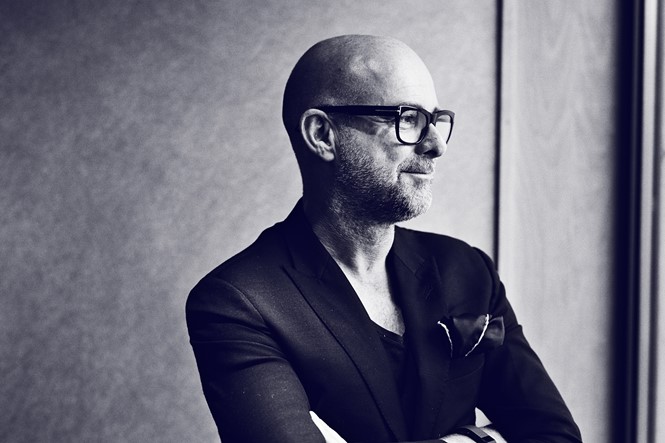Five Minutes with John Brash

John Brash, founder and CEO of luxury place-making and destination branding agency, Brash, speaks to Transform magazine about the future of destination branding. He explores how luxury place-making in the Middle East differs from that of the Europe and which were the key design elements behind the branding of Burj Khalifa, the world's tallest building.
What does the future of destination branding look like post Covid-19?
Even though some restrictions around holidays fell over the summer, traveling won’t be normalised for some time. As such, destinations shouldn’t adopt a “back to as it was before” approach, but instead, acknowledge that things are different.
Apart from safety messaging, destination brands need to work harder on defining their unique positioning. This will be key to provide unique location-based experiences – e.g., Dubai is more than “glamour and shopping”, it has other exciting activities to offer such as arts and high-adrenaline adventure options. On the other hand, London is a melting pot of culture - from high to pop and street, arts, and authenticity. All brand touchpoints should be considered to amplify such messaging, from brand films to influencers (where appropriate).
With a lot of businesses implementing flexible work policies, we will probably see a rise in the “work from anywhere” experiences and the emergence of the long-term visitor or semi-resident visas. This will create a whole new market within the travel industry, which brands must be ready to capitalise on. Amenities such as access to high-speed internet and access to meeting rooms will be crucial to appealing to the business traveller demographic.
Why is it important to take a customer-centric approach in luxury residential and hospitality design?
Uniqueness is what defines the luxury experience. Today’s ultra high-net-worth individuals (UHNWI) invest in everything from real estate to antiques, private transport to art – all on the premise that it isn’t a replica. Difference defines and distinguishes what is special from what is standard. A bespoke tailored approach no longer cuts through the noise. Brands need to co-create the experience alongside the customers to ensure they are adding meaning to their lives, not just an ordinary sales experience
There is also an increasing opportunity around ‘luxury with meaning’. Consumers don’t just want luxury products or even luxury experiences anymore. They also want to know how something will add meaning and value to their life: spiritually and emotionally, not just physically or financially.
At Brash, we often leverage multi-sensory and immersive techniques to create ‘theatre’ around the brand’s stories, making the whole process of engaging with a luxury brand or product a desirable experience. This is proving to be particularly effective in the realm of super-prime real estate as most properties are being sold off plan without a show apartment available on site.
How has hospitality and place branding changed in the last decade?
Gaining insight into key customers and users has never been easier, meaning benchmarking can be done on a global basis across various sectors as more data is readily available over different outlets. This enables us to understand what clients and owners have gained from this intel, so hospitality and place branding can tailor their experiences to consumers’ needs.
With new concepts constantly challenging established brands, innovation is key within the industry to continuously inspire and create different and authentic experiences to ensure customer satisfaction. With consumer expectations at a high and only set to increase post-pandemic, people want to spend their time wisely, partaking with unique, credible experiences. Experience has become the most important factor in hospitality and place branding over the last decade. With social media increasingly becoming a way for brands to develop their clientele reach and exposure, it is about elevating post-worthy experiences, cultivating curiosity among other consumers and creating a ‘social buzz’.
How does luxury place-making in the Middle East differ from that of the UK and Europe?
The Middle East’s products, amenities, and experiences don’t differ vastly to those of the UK and Europe as it appears to be the same customer.
The difference stems from several reasons including land availability, planning and regulatory restrictions, the scale of the job, and the market size. There is a greater opportunity in the Middle East to create flamboyant master plans due to their mixed-use, meaning greater potential for exciting and engaging experiences. Some emerging markets such as the Kingdom of Saudi Arabia have been largely invisible on the global tourist map, so they need to provide a reason for people to visit and appeal to their target audience. Therefore, the architecture is more iconic, with global brands trying to reach new audiences by partnering with established brands and new concepts which eventually lead to scalability. This is due to the ability to build multiple projects at once in 2/3 locations.
What were the most important aspects to consider when developing the brand identity behind Burj Khalifa?
Strategic imperatives needed to be considered as well as supporting the vision of Dubai becoming a global centre. We had to guarantee the brand experience and identity was not only world-class but would become a benchmark for innovative luxury brands. We needed to maximise the value of square footage when considering the brand identity as this was the centrepiece in selling over 15 thousand apartments. We understood that height was not the main component of the brand narrative. Instead, we focused on positioning Burj Khalifa as the building that will become an icon in the history of Dubai.
Capturing the vision of the project as well as the complexities, professionalism, excellence, and innovation of the world’s tallest building was essential as these components were all part of the strategy and visual experiential expression of the brand itself. The linearity of the brand mark and design system crafted bespoke font, colour palette, branded environments, and the accent lime green influenced from the spirit level, alludes to precision.












